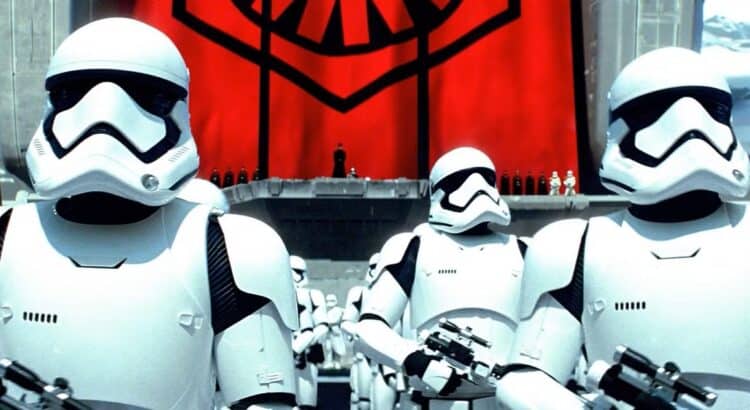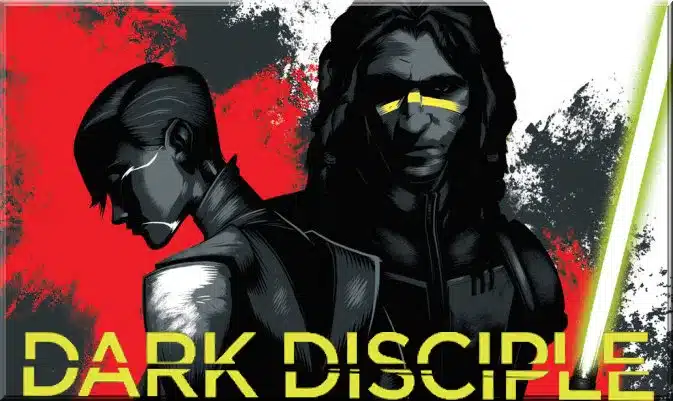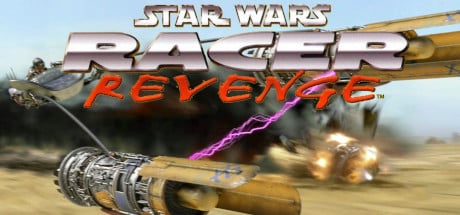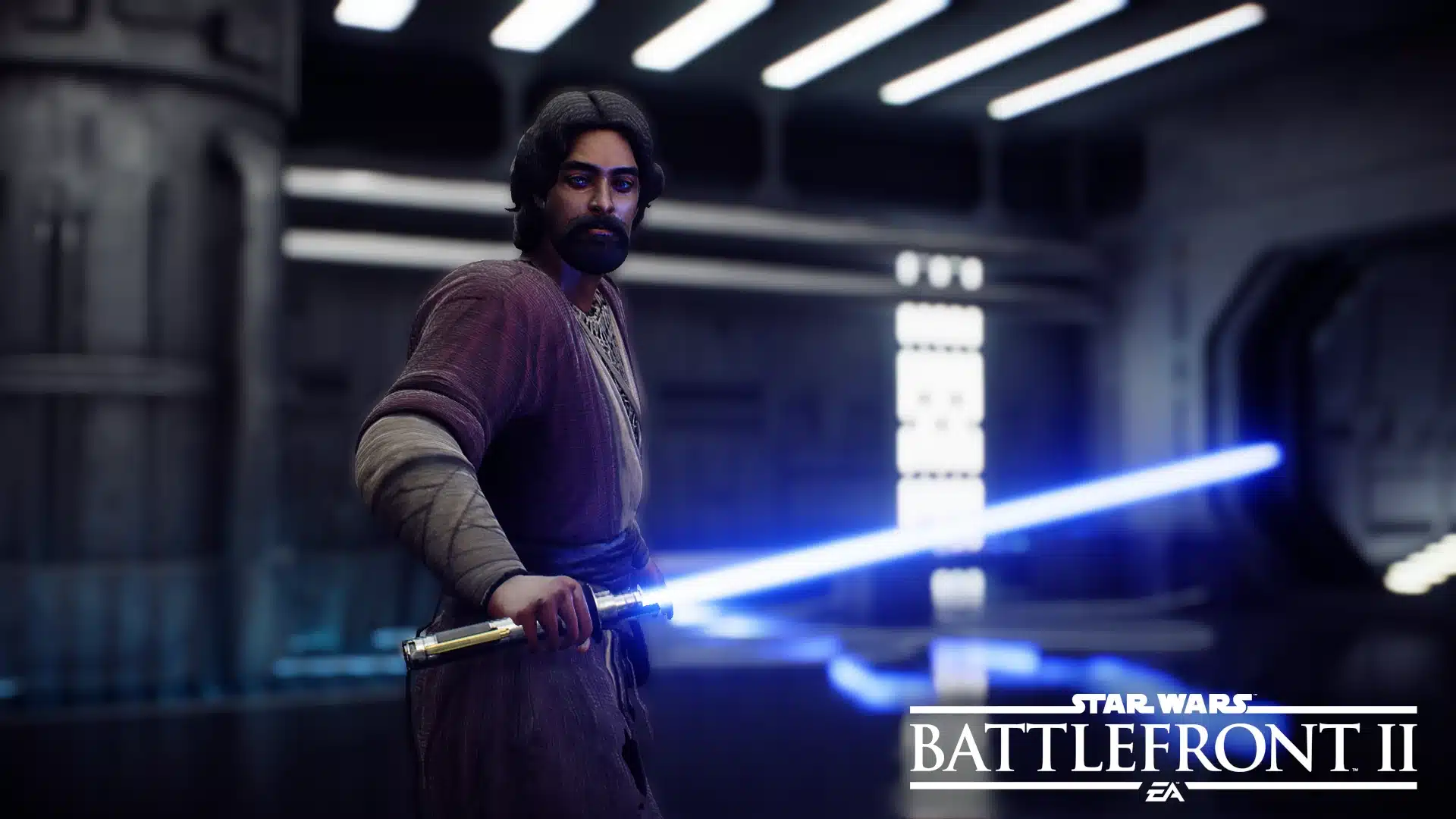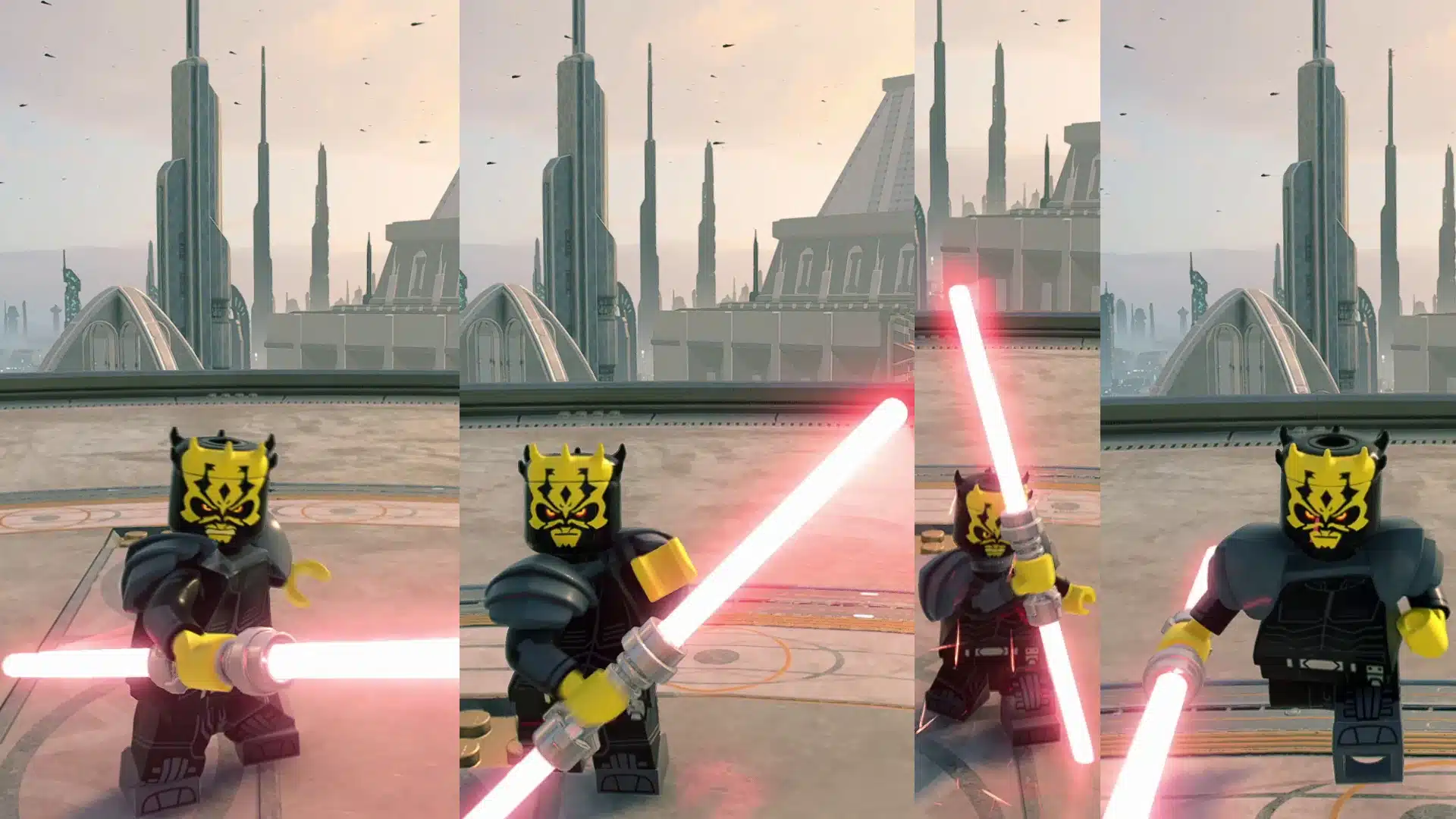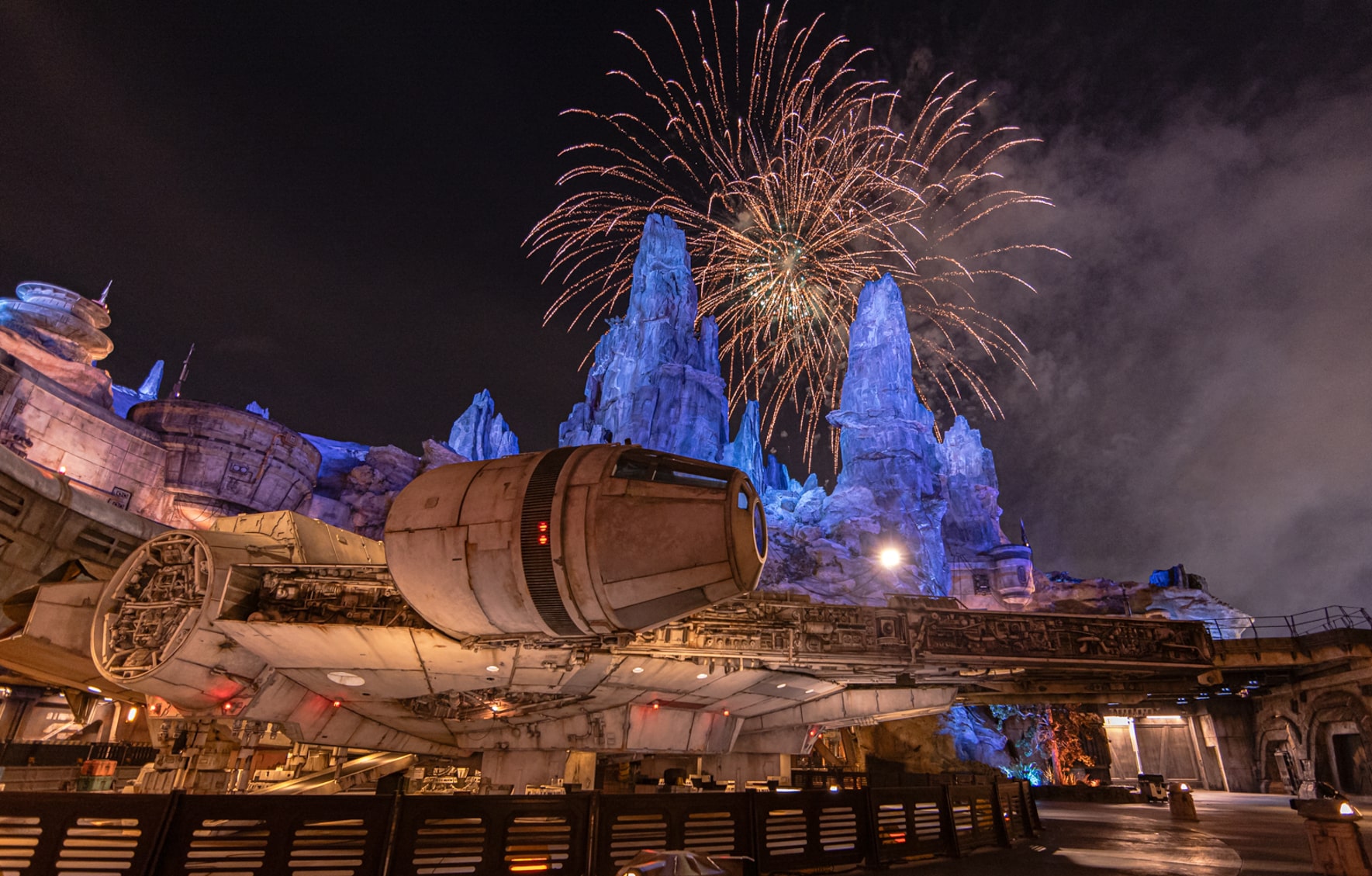The Star Wars universe has always been more than just space battles, lightsabers, and dramatic family betrayals—it’s a galaxy rich with political intrigue, shifting ideologies, and power struggles that mirror real-world history. At the heart of this ongoing struggle lies one of the most compelling factions introduced in the sequel trilogy: the First Order.
From the moment they storm onto the screen in The Force Awakens, it’s clear that the First Order is modeled after the Empire. The stormtroopers, the towering Star Destroyers, and the overwhelming military presence all scream, “We’re back, and we’re angrier than ever.” But there’s a deeper question beneath the surface: Is the First Order merely an Imperial holdover, clinging to the remnants of the past, or is it something more radical—an evolution of authoritarian rule in a new and even more dangerous form?
At first glance, the First Order seems like a carbon copy of the Empire—another group of power-hungry warlords trying to dominate the galaxy. But a closer look reveals something far more insidious. Unlike the Empire, which was a structured dictatorship with a long-term vision, the First Order is a volatile, rage-fueled movement driven by fanaticism rather than governance. It doesn’t just want to rule; it wants revenge. It doesn’t just want power; it wants to erase the past and rewrite history on its own terms.
Why the First Order Matters
The First Order isn’t just an antagonist in the Star Wars saga—it’s a case study in how extremist ideologies rise, how nostalgia for an oppressive past can fuel new movements, and how political systems built on anger and vengeance ultimately collapse under their own weight. It takes the worst aspects of the Empire—militarism, fear, and control—and amplifies them to unstable, unsustainable levels.
This article will break down:
- How the First Order structured itself—Was it a government or a cult?
- The ideology behind the movement—Was it just Imperial nostalgia, or something more extreme?
- How it borrowed from the Empire while twisting its legacy into something even more dangerous.
- What its actual goals were (or if it even had a real endgame beyond destruction).
- Why it was doomed to fail, even if it had won.
In short, we’re taking a deep dive into the political structure, ideology, and ultimate fate of the First Order to figure out if it was just a desperate attempt to revive the Empire, or a whole new breed of galactic tyranny.
One thing is for certain—whether you loved or hated the sequel trilogy, the First Order was one of the most chaotic and self-destructive factions to ever try and rule the galaxy. And that alone makes it worth analyzing.

A Government or a Cult? The Political Structure of the First Order
At first glance, the First Order appears to be a direct continuation of the Galactic Empire—an authoritarian regime seeking to reassert dominance over the galaxy. But upon closer examination, its structure is more chaotic, more ideological, and far more cult-like than the Empire ever was.
Rather than being a straightforward dictatorship with a clear governing framework, the First Order operates more like a fanatical, militarized movement, where devotion to the cause outweighs logic, and power is concentrated in a way that makes the Galactic Empire look almost bureaucratic by comparison.
So, what makes the First Order more of a political cult than a functional government? Let’s break it down.
1. Supreme Leader at the Top – Power Without Limits
If Palpatine’s rule was a dictatorship disguised as a legitimate empire, the First Order doesn’t even bother with the illusion. At the top sits the Supreme Leader, a figure with absolute control over military, political, and ideological matters. Snoke, and later Kylo Ren, act as both political rulers and almost religious figures, embodying the First Order’s extreme belief system.
- No checks, no balances: The Emperor had his advisors, his Moffs, and a structured chain of command. The Supreme Leader, on the other hand, rules with unquestionable authority, and dissent is met with immediate execution (or in Hux’s case, frequent verbal abuse).
- A cult of personality: Much like real-world autocratic leaders, the Supreme Leader is revered almost to a divine level. Snoke projects himself as an all-seeing, godlike figure, appearing in massive holograms to assert his dominance. This reverence continues under Kylo Ren, though his rule is a bit more… unhinged.
- No clear succession plan: The Empire, for all its flaws, had a hierarchy. The First Order? If Snoke had left a will, it was probably scribbled on the back of a napkin. His abrupt death left a vacuum that Kylo Ren filled, not because he was the best choice, but because he was the most powerful and the angriest person in the room.
2. A Military-First Society – War is the Only Goal
The First Order isn’t just a government—it’s a war machine masquerading as one. Unlike the Empire, which at least had the structure of a functioning state (governors, taxation, infrastructure, and civilian administration), the First Order exists solely to wage war and crush the Republic.
- No civilian leadership: The Empire maintained planetary governors, local law enforcement, and an intelligence network. The First Order? Its only “governors” are military commanders who rule through sheer intimidation and force.
- A society built around war: Every aspect of the First Order’s existence revolves around militarization. From its starship construction efforts to its labor force, everything is geared toward conquest. There’s no real economy, trade system, or civilian bureaucracy—just war machines and the people operating them.
- Stormtroopers as property, not soldiers: While the Empire’s stormtroopers were recruited and trained (many coming from elite academies like Carida), the First Order doesn’t take any chances with free will. Instead, it abducts children, brainwashes them from birth, and conditions them into perfect foot soldiers with no concept of individuality. They aren’t just enforcers; they’re programmed zealots.
3. The Inner Circle – A Government of Fanatics
If the Galactic Empire was a military dictatorship, the First Order is a militarized cult. Its high-ranking officials aren’t just political and military leaders—they’re true believers in its cause.
- General Hux: The True Believer – While many Imperial officers served out of ambition or fear, Hux is different. He’s not just a general—he’s a fanatic. Raised in the shadow of the defeated Empire, Hux doesn’t just want power; he wants vengeance. His loyalty to the First Order isn’t just strategic—it’s ideological. He sees himself as a savior, bringing order to a chaotic galaxy.
- Captain Phasma: The Relentless Enforcer – Phasma isn’t just a high-ranking stormtrooper commander; she’s the embodiment of First Order fanaticism. Unlike Imperial officers, who often sought personal gain, Phasma is utterly devoted to the First Order’s ideology, training stormtroopers with a brutal efficiency that makes Imperial training regimens look like summer camp.
- Kylo Ren: The Messianic Wild Card – Kylo Ren’s role in the First Order is more complicated. He’s not a traditional political leader—he’s a force-wielding warlord with a violent temper and a Vader fixation. Unlike Palpatine, who carefully manipulated those around him, Kylo rules through sheer rage and intimidation. His leadership is erratic, emotionally driven, and, ultimately, self-destructive.
4. The Role of Ideology – First Order as a Political Cult
The First Order doesn’t just seek power—it seeks total control over thought and belief. Where the Empire ruled through fear and oppression, the First Order goes a step further, fostering a fanatical devotion among its followers.
- The Myth of Imperial Greatness: The First Order’s propaganda is built on the idea that the Empire was unjustly defeated and that the galaxy was better off under Imperial rule. It paints the New Republic as weak and corrupt, stoking resentment among those who long for the old days of Imperial dominance.
- Brainwashing from Birth: The Empire conscripted soldiers. The First Order takes children and erases their pasts, reshaping them into obedient servants. This level of indoctrination is extreme, ensuring that its soldiers and officers have no personal identity beyond their role in the Order.
- The Worship of Power: The Empire sought order, but the First Order worships power for power’s sake. Strength is everything. Weakness is unforgivable. Mercy is a sign of failure. This ideology turns the First Order into a ruthless machine that prioritizes dominance over sustainability.
5. No Plan for Peace – The First Order’s Self-Destruction
One of the strangest aspects of the First Order’s structure is that it has no clear plan for what happens after victory. The Empire at least had a governing model, flawed as it was. The First Order? It’s pure destruction with no endgame.
- No political strategy: The Empire had governors, a taxation system, and an intelligence network. The First Order? Just a giant fleet and a lot of angry people.
- No diplomatic branch: The Empire used spies, negotiations, and even political alliances. The First Order only knows force.
- No actual governance: If the First Order had succeeded in wiping out the Resistance and New Republic, it’s unclear how it would have functioned. It had no civilian infrastructure, no economic plan, and no system of rule beyond “follow the Supreme Leader or die.”
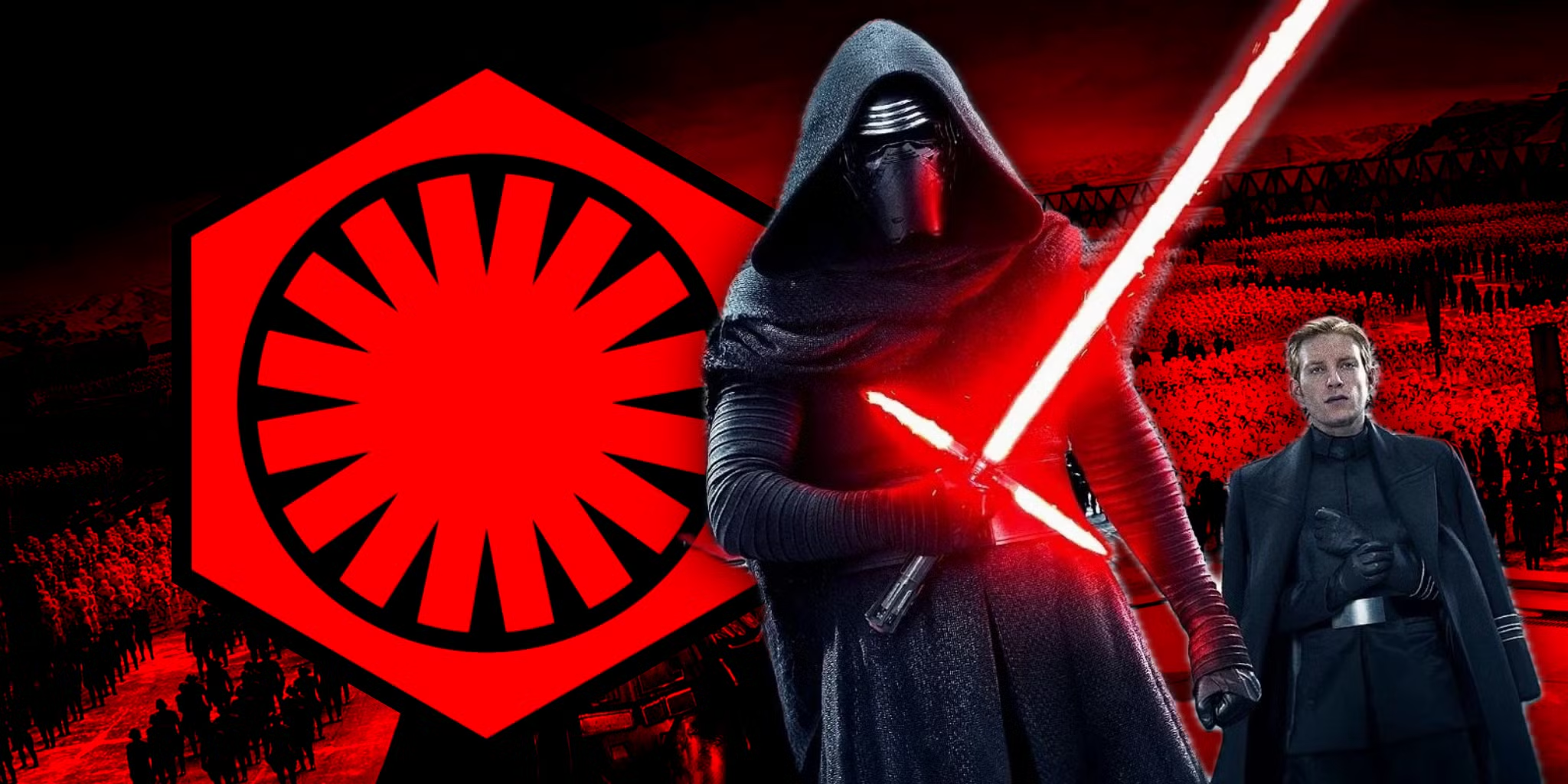
Final Verdict: A Government? No. A Fanatical Death Cult? Absolutely.
At its core, the First Order is less of a governing body and more of a militarized cult obsessed with vengeance, power, and domination. Unlike the Empire, which had long-term plans for rule (however cruel they may have been), the First Order exists solely to destroy.
Its structure is unstable, its leadership is volatile, and its ideology is so extreme that it ultimately dooms itself. If the Empire was a brutal dictatorship, the First Order is what happens when you take that dictatorship, remove all sense of logic, and let it be run by people who think smashing control panels is an effective leadership strategy.
So, was the First Order a government? Not really. It was more of a death cult with star destroyers. And like most cults, it was only a matter of time before it collapsed under the weight of its own insanity.
Ideology: Nostalgic Fascism with a New Coat of Paint
The Empire was oppressive, but it at least had a vision of order. The First Order? It’s built on a twisted nostalgia trip, a deep-seated resentment of the New Republic, and an unhealthy fixation on a past that—let’s be honest—wasn’t all that great to begin with.
Where the Empire was an authoritarian regime with clear (if brutal) policies, the First Order is more like an extremist movement that worships its predecessor without fully understanding it. It doesn’t just want to restore the Empire—it wants to avenge it. The result? A political ideology that’s less about governance and more about vengeance, fanaticism, and unchecked militarism.
Let’s break down what makes the First Order’s ideology distinct—and why it’s even more terrifying than Palpatine’s Empire.
1. “Make the Empire Great Again” – The First Order’s Obsession with the Past
The First Order is essentially the Star Wars version of a radicalized fringe group living off Imperial propaganda holotapes and telling themselves, “We were robbed!
- The Empire was “wrongfully” defeated. The First Order doesn’t see the fall of the Empire as the result of its own failures. No, no—it was betrayed by the weak, the corrupt, and the undeserving. The rebels didn’t win because they fought for freedom; they won because the galaxy was too soft to appreciate real strength.
- The New Republic is a mistake. The First Order views the New Republic as weak, inefficient, and fundamentally broken. To them, democracy isn’t a form of government—it’s a disease. They see the fall of the Empire not as a liberation but as a catastrophic loss of order and discipline.
- Their entire movement is revenge-fueled. While the Empire sought to control the galaxy through order and fear, the First Order is driven by spite. It’s not just about ruling—it’s about punishing the galaxy for rejecting the Empire in the first place.
This obsession with the past is what makes the First Order so radical. It isn’t interested in building something new—it wants to undo history and rewrite the ending.
2. The Cult of Darth Vader – Selective Memory at Its Finest
One of the most bizarre aspects of the First Order’s ideology is its worship of Darth Vader. While the Empire revered Palpatine as the ultimate authority, the First Order treats Vader like a mythical figure—despite the slight problem that he turned against the Empire in the end.
- Kylo Ren’s unhealthy obsession. Kylo Ren takes this to an extreme, treating Vader not just as a role model but as an almost religious symbol. He speaks to Vader’s mask, seeks guidance from it, and models himself after the Sith Lord—even though Anakin literally destroyed the Emperor to save his son.
- Ignoring inconvenient history. The First Order doesn’t just admire Vader’s strength; they twist his legacy to fit their narrative. The fact that Vader redeemed himself and rejected the Empire? Not important. What matters is that he was powerful, ruthless, and feared throughout the galaxy. That’s the part they want to emulate.
- The Sith influence without the Sith structure. Unlike Palpatine, who carefully maintained Sith traditions, the First Order takes a more “DIY” approach to the Dark Side. Snoke (who is, let’s be real, just a Palpatine sock puppet) fosters Kylo Ren’s power but doesn’t follow the traditional “Rule of Two.” This makes the First Order’s leadership more unstable, as it lacks the calculated discipline of the Sith Lords before them.
This fixation on Vader is less about ideology and more about symbolism. The First Order isn’t following the actual tenets of Sith philosophy—they’re just cherry-picking the parts they like and turning them into a rallying cry for their movement.
3. Brainwashing Over Bureaucracy – The First Order’s Control Tactics
If the Empire was about fear, the First Order is about total control. Unlike the Empire, which at least allowed for independent thought (as long as it didn’t challenge Palpatine), the First Order actively eliminates individual identity.
- Stormtroopers as property. The Empire recruited, trained, and deployed stormtroopers as soldiers. The First Order, on the other hand, steals children, erases their past, and conditions them from birth to be mindless enforcers. This ensures absolute loyalty—no personal ambition, no hesitation, just blind obedience.
- Loyalty through isolation. The First Order doesn’t just indoctrinate its troops—it raises them in complete isolation. They have no family, no culture, no history beyond what the First Order tells them. They don’t serve because they believe in the cause; they serve because it’s the only reality they’ve ever known.
- Punishment for free will. While the Empire had defectors, the First Order ensures that betrayal is nearly impossible. The psychological conditioning is so extreme that when Finn breaks free of it, it’s treated as an unprecedented anomaly. He wasn’t just rebelling—he was overcoming years of programming.
This level of control goes beyond the Empire’s usual “rule through fear” strategy. The First Order doesn’t just want obedience—it wants fanatic devotion.
4. The Worship of Strength – Power Above All Else
The First Order’s ideology boils down to one thing: strength is everything.
- The strong rule, the weak perish. The First Order doesn’t believe in compromise, governance, or diplomacy. The galaxy, in their eyes, belongs to those who are powerful enough to take it. Anyone who values peace, negotiation, or compassion is seen as weak and unworthy of survival.
- Kylo Ren’s leadership by temper tantrum. Unlike Vader, who enforced discipline and calculated his actions, Kylo Ren’s rule is pure chaos. He lashes out violently, killing subordinates on a whim, and rules through fear rather than strategy. His erratic behavior reflects the First Order’s fundamental instability—it’s a movement built on anger, not long-term vision.
- The absence of real political structure. The Empire had a Senate (briefly), regional governors, and a bureaucracy. The First Order has… Hux screaming orders and Kylo Ren smashing control panels. There’s no government, no infrastructure—just a military dictatorship with no plan beyond more war, more destruction.
This ideology of strength above all is what ultimately leads to the First Order’s downfall. It doesn’t foster stability—it creates a leadership structure that devours itself from within.
5. The First Order’s Endgame: Dominate, Destroy… Then What?
The First Order’s ideology is terrifying not just because of its brutality, but because of its lack of foresight.
- No plan beyond conquest. The Empire had the long-term goal of establishing a galactic order under Sith rule. The First Order? It just wants to crush the New Republic and rule through sheer force—without any real plan for what comes next.
- A ticking time bomb. The First Order’s leadership is so unstable that it was doomed from the start. Snoke was using Kylo Ren as a tool. Kylo killed Snoke in a fit of rage. Hux was constantly plotting against Kylo. This level of internal chaos made a long-term First Order rule practically impossible.
- Self-destruction was inevitable. The First Order’s obsession with power for power’s sake made it fundamentally unsustainable. Unlike Palpatine, who thought in centuries, the First Order thought in immediate revenge. It was never meant to last—it was meant to punish. And that’s why it collapsed so quickly.
Final Verdict: The First Order’s Ideology—More Dangerous, Less Sustainable
The First Order took the worst parts of the Empire—fascism, brutality, and militarism—and cranked them up to 11, without any of the strategic depth that made the Empire a lasting force. It was built on nostalgia, rage, and a refusal to accept reality.
In the end, the First Order wasn’t just an Imperial remake—it was a warped, radicalized shadow of the past. And like most extremist movements obsessed with revenge, it burned itself out before it could ever truly rule.
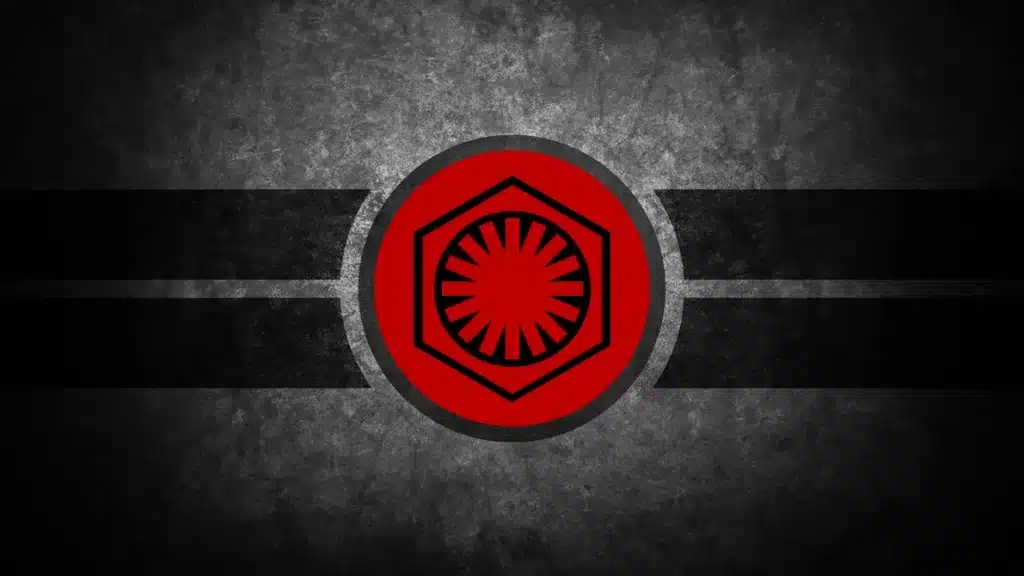
How the First Order Builds on the Empire’s Legacy (and How It Differs)
If the Galactic Empire was a terrifying, bureaucratic dictatorship, the First Order is its chaotic, rage-fueled successor with even fewer checks and balances. While it clearly borrows from the Empire’s playbook—stormtroopers, Star Destroyers, and an obsession with giant superweapons—it also diverges in critical ways.
The Empire had a clear (if twisted) vision for the galaxy, relying on governance, military power, and propaganda to maintain control. The First Order, however, is less of a government and more of a vengeful, radicalized insurgency fueled by nostalgia, fanaticism, and a deep-seated hatred for the New Republic.
So how does the First Order compare to the Empire? Is it an evolved version of Palpatine’s reign, or a reckless knockoff destined to self-destruct? Let’s break it down.
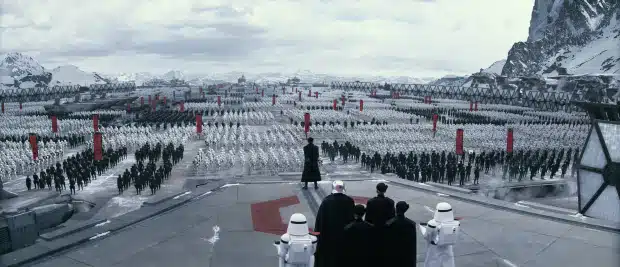
1. Same Military Aesthetic, Different Mindset
At first glance, the First Order looks like the Empire. It has the same sleek black-and-white uniforms, imposing Star Destroyers, and hordes of stormtroopers. But beneath the surface, its military culture is wildly different.
- The Empire’s Military: Structured, bureaucratic, and hierarchical. Officers often came from noble families or Imperial academies, trained in strategy and governance. There was corruption, sure, but the Empire functioned as an actual government.
- The First Order’s Military: More extreme, more ideological, and far more unstable. Officers like Hux were raised in a world where the Empire’s loss was seen as a deep humiliation. They weren’t just trying to rule; they wanted to avenge the past.
The First Order didn’t just inherit the Empire’s weapons—it inherited its anger, but without the discipline that made the Empire a long-term power.
2. The First Order’s Leadership: Emotional Warlords vs. Cold Strategists
The Galactic Empire may have been an oppressive nightmare, but at least its leaders knew how to run a galactic dictatorship. Palpatine ruled with a mix of fear and political cunning, and his officers—while often ruthless—were competent military minds.
The First Order, on the other hand, is run by a collection of emotionally unstable zealots who make decisions based on personal grudges rather than strategic necessity.
- The Empire’s Leadership:
- Palpatine: A master manipulator who played the long game, orchestrating the Clone Wars, dissolving the Senate, and tightening his grip on power through methodical, ruthless planning.
- Darth Vader: A terrifying enforcer who maintained order through fear but remained a disciplined and calculated figure.
- Grand Moff Tarkin: A cold and calculating military commander who understood power and the importance of controlled force.
- The First Order’s Leadership:
- Snoke: A manipulative figurehead (literally) who pretends to be a master strategist but is ultimately just a proxy for Palpatine with no long-term plan beyond “crush the Resistance.”
- Kylo Ren: A deeply emotional and erratic leader who makes impulsive decisions, smashes control panels when he’s mad, and kills his own allies when things don’t go his way.
- General Hux: A power-hungry extremist who lacks the tactical brilliance of someone like Tarkin. Instead of calculated strategy, his leadership is based on fanatical devotion and personal ambition.
While the Empire had a chain of command and a functioning hierarchy, the First Order’s leadership is a dysfunctional mess of ego-driven rivalries and impulsive decision-making.
3. The First Order’s Economy (or Lack Thereof)
The Empire, for all its evil, had an actual economic system. It ruled over planets, taxed them, and used those resources to fuel its massive military-industrial complex. The Empire needed the galaxy to function because it relied on its wealth and labor to maintain control.
The First Order? It has no economy.
- The Empire’s Economy: A functioning system (however exploitative) that involved planetary governance, taxation, trade, and infrastructure. It had shipyards, production facilities, and vast mining operations. The Death Star wasn’t just built—it was funded.
- The First Order’s Economy: Built in exile in the Unknown Regions with no apparent system of governance or economic sustainability. It relies entirely on looted Imperial resources and forced labor, with no civilian workforce to maintain its infrastructure.
This is one of the First Order’s biggest weaknesses—it is a purely military entity with no real sustainability. Without an economy to support its massive fleet, it needs constant war just to justify its existence.
4. The First Order’s Overcompensating Superweapons
The Empire was known for its massive, terrifying superweapons—most famously, the Death Star. But while the Death Star was an ambitious (if impractical) tool of terror, the First Order takes things to ridiculous extremes.
- The Death Star: A massive planet-killing space station designed to keep star systems in line through fear. It was a strategic (if deeply flawed) tool of oppression.
- Starkiller Base: The First Order takes the Death Star concept and dials it up to 11. Instead of destroying planets, it destroys entire star systems. Because why settle for one when you can kill billions at once?
But here’s the problem:
- The Death Star was a costly, resource-intensive weapon, but at least it made sense in the Empire’s strategy of fear-based control.
- Starkiller Base? A wildly impractical superweapon that ultimately backfired. It was overkill, and it drained the First Order’s resources instead of consolidating power.
The First Order’s obsession with bigger and deadlier weapons is a reflection of its entire ideology—brute force over long-term strategy.
5. How the First Order’s Rule Would Have Played Out (If It Had Won)
Had the Empire won, it would have continued governing as an oppressive, militaristic state with a functioning bureaucracy. Had the First Order won? It probably would’ve collapsed under its own weight.
- The Empire’s Endgame: Totalitarian rule enforced through order, fear, and propaganda. Palpatine had a multi-decade plan to solidify power and establish a dynasty of Sith rule.
- The First Order’s Endgame: Destroy the Republic, wipe out the Resistance, and then… what? There was no plan for governing the galaxy, no system for managing planets, and no economic structure to keep the war machine running indefinitely.
Essentially, the First Order would have burned out the moment it took power. It wasn’t built to last—it was built to wreak havoc and seek revenge.
Final Verdict: The Empire Was an Oppressive Machine, The First Order Was a Rampaging Dumpster Fire
While the First Order borrowed heavily from the Empire’s aesthetics and military tactics, it was ultimately a weaker, more unstable version of its predecessor.
- The Empire was a long-term authoritarian regime that ruled through propaganda, military power, and economic control. It had structure, governance, and a clear chain of command.
- The First Order was an emotionally driven, extremist movement fueled by revenge and rage, with no clear plan beyond destruction and conquest. It lacked political structure, a sustainable economy, and even basic leadership stability.
If the Empire was a well-oiled war machine, the First Order was a rage-fueled death cult with star destroyers—and that’s why it was doomed to fail from the start.
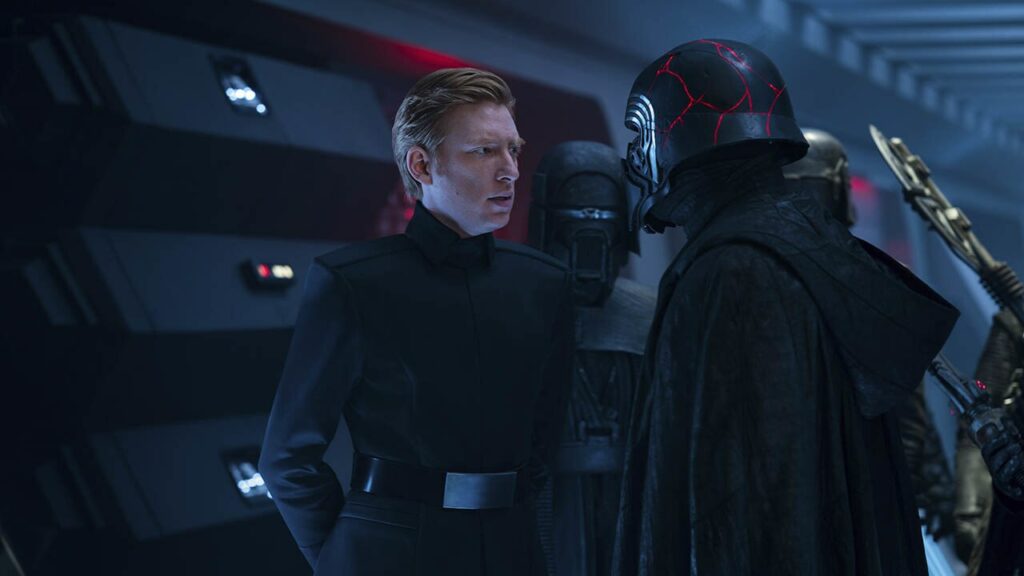
What Was the First Order’s Endgame?
The Galactic Empire had a clear (if tyrannical) vision: absolute control over the galaxy, enforced through military dominance, propaganda, and fear. The First Order? Not so much.
If you were to ask any member of the First Order what their ultimate goal was, they’d probably give you some vague, dramatic answer about restoring “order” to the galaxy. But beyond destroying the New Republic and crushing any opposition, they didn’t seem to have much of a plan for what came next.
So, what was the First Order’s actual endgame? Was it about governance? Domination? Revenge? Or was it all just an over-glorified tantrum against history? Let’s break down what they were trying to achieve, why it didn’t work, and why even if they had won, they were doomed to collapse.
1. Destroy the New Republic – The First Step to Control?
The First Order’s first major goal was simple: eliminate the New Republic.
- The Republic represented everything the First Order hated—democracy, self-governance, and a rejection of Imperial rule.
- By wiping out the Republic, they believed they could erase the past failures of the Empire and take back control of the galaxy.
- Starkiller Base was their answer: a planet-killing weapon designed to obliterate key Republic worlds and leave the government in ruins.
And, to be fair… they actually succeeded. The destruction of Hosnian Prime and the New Republic’s capital effectively decapitated the galaxy’s main governing body. But here’s the problem: they didn’t have a political system in place to replace it.
When Palpatine dismantled the Galactic Senate, he had already consolidated power and established a ruling structure with regional governors, Moffs, and a military hierarchy. The First Order? They just blew stuff up and hoped for the best.
This is where their plan fell apart.
2. Rule Through Fear – But Without the Infrastructure to Back It Up
The Empire’s rule was based on fear and military enforcement, but it also had infrastructure—planetary governors, supply chains, economic control. The First Order? Not so much.
- They destroyed the New Republic but didn’t install a new government.
- They had no bureaucratic structure to manage planets, enforce laws, or collect resources.
- Their rule boiled down to “we have a fleet and we’ll kill anyone who resists.”
Fear-based rule only works if you have the ability to maintain control over vast territories. The First Order lacked the manpower and infrastructure to actually govern a galaxy-wide empire. They weren’t a functioning government—they were a military occupation force with no plan beyond continued war.
This is a key reason why, even after wiping out the New Republic, they couldn’t hold the galaxy together. The moment they faced serious resistance (thanks to the Resistance and later the Final Order debacle), their entire structure crumbled.
3. The First Order’s Leadership – A Ticking Time Bomb
Even if the First Order had managed to maintain control, its leadership was too unstable to ensure long-term rule.
- Snoke’s Death: The Supreme Leader was the glue holding the First Order together, and Kylo Ren killed him without having a plan for what came next.
- Kylo Ren’s Rule: Kylo wasn’t a strategist—he was an emotionally unstable Sith wannabe with anger issues. He ruled through raw power, not through diplomacy or governance.
- Hux’s Incompetence: General Hux was a fanatic, not a leader. His primary motivation wasn’t securing First Order rule—it was proving he was better than Kylo Ren.
Contrast this with Palpatine’s Empire:
- Palpatine didn’t just rule with power—he played the long game, manipulating politics and maintaining a vast bureaucratic system.
- He ensured his Empire had stability—regional governors, an economy, and a hierarchy of leadership that could function even in his absence (until Vader threw him down a reactor shaft).
- The First Order had none of this. It was a power struggle waiting to implode.
With no stable leadership and no governmental structure, the First Order’s rule would have collapsed under its own dysfunction—even without the Resistance fighting back.
4. The Final Order – Palpatine’s Back-Up Plan That Nobody Asked For
As if the First Order wasn’t already teetering on the edge of self-destruction, Palpatine suddenly showed up with an even bigger, even dumber plan: the Final Order.
- Instead of solidifying the First Order’s rule, Palpatine revealed that he had been pulling the strings the whole time and had an even bigger fleet hidden away.
- His plan? Make the galaxy bow by giving every Star Destroyer a planet-killing laser. Because apparently, subtlety is for losers.
- The First Order, which had already struggled to establish itself as a legitimate power, suddenly became a side act in Palpatine’s endgame.
This wasn’t an expansion of the First Order’s plan—it was a complete hijacking of their purpose. Suddenly, Kylo Ren was playing second fiddle to Palpatine, and the First Order’s leadership was sidelined by an army of cultists who had been hiding out on Exegol for decades.
At this point, the First Order didn’t even have an endgame anymore. It was just a bunch of warships waiting for Palpatine to push the “galactic domination” button. And when Palpatine was defeated? The entire thing fell apart overnight.
5. Why the First Order Was Always Doomed to Fail
Even if Palpatine had never returned, the First Order was always destined to collapse under its own contradictions.
- Lack of Governance: They destroyed the Republic without replacing it with a functioning system of control.
- Over-Reliance on Fear: They had no ability to maintain power beyond military force, and history shows that military occupations don’t last without political stability.
- Internal Power Struggles: Kylo Ren and Hux were more focused on undermining each other than leading effectively.
- A Destructive, Not Constructive Vision: The First Order didn’t want to build anything—it just wanted to tear down what came before. That kind of ideology isn’t sustainable.
At the end of the day, the First Order was a reactionary movement, not a true government. It wasn’t designed to rule—it was designed to avenge the Empire. And once it had exacted its revenge, it had no idea what to do next.
Final Verdict: The First Order Wasn’t an Empire—It Was a Temper Tantrum With Star Destroyers
The First Order’s endgame wasn’t really an endgame at all. It was just destruction for destruction’s sake.
- The Empire at least had a political system (however evil it was). The First Order had nothing beyond military dominance.
- The Empire’s leaders were brutal but competent. The First Order’s leaders were emotionally unstable and self-destructive.
- The Empire had a clear plan for long-term control. The First Order collapsed the moment it faced real opposition.
At its core, the First Order wasn’t an empire in the making—it was a radicalized, revenge-driven movement with no future. It burned bright, raged hard, and then imploded under its own weight.
If history has taught us anything, it’s that governments built on revenge and destruction never last. And the First Order? It was just a failed sequel to the Empire—one that never even made it past the second act.
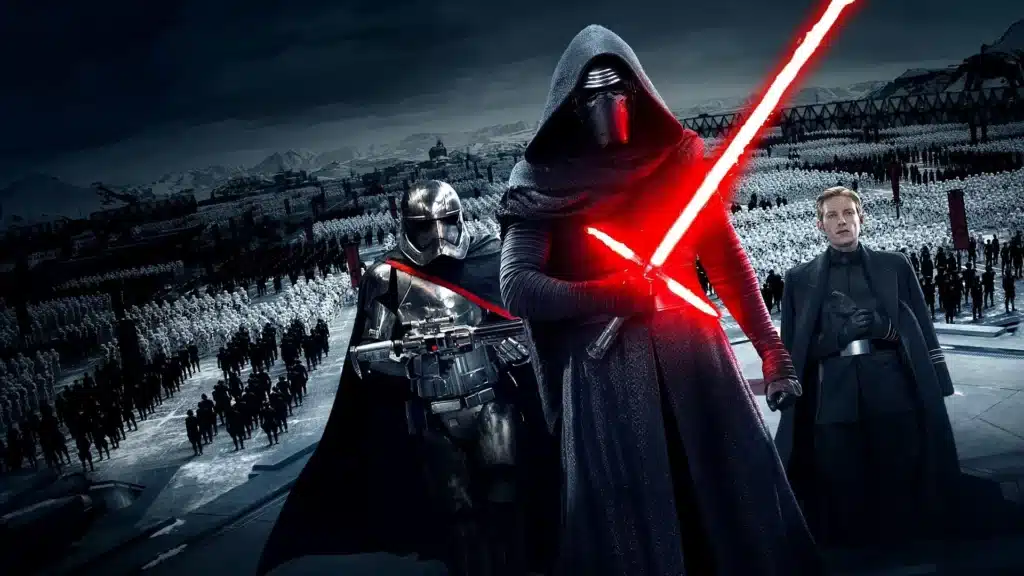
Conclusion: The First Order – A Doomed Attempt at Reviving the Empire
At first glance, the First Order might seem like little more than the Empire 2.0—same uniforms, same fleet, same stormtroopers marching in rigid lines under the command of an all-powerful leader. But when you peel back the layers, it becomes clear that the First Order was not a true successor to Palpatine’s vision. It was something much more unstable, much more radical, and ultimately, much more doomed to fail.
Unlike the Empire, which had a calculated, methodical approach to ruling the galaxy, the First Order was born from resentment and nostalgia rather than strategy. It didn’t seek to govern—it sought to punish. Every aspect of its ideology, from its military structure to its fanatical leadership, was designed not to maintain long-term control, but to erase the past and rewrite history in its own image.
The Key Differences That Sealed the First Order’s Fate
Throughout this article, we explored how the First Order built on the Empire’s foundation while twisting it into something even more volatile. Let’s break down the major reasons why it was destined to fail:
- It Was More of a Cult Than a Government
- The Empire, as tyrannical as it was, had a functioning bureaucracy, a chain of command, and a well-oiled military machine. The First Order, on the other hand, was a movement of extremists who had no real governing structure.
- It ruled through fear, propaganda, and indoctrination, but lacked the political infrastructure to maintain control over the galaxy.
- Its Leaders Were More Emotional and Unstable Than Strategic
- Palpatine was a master manipulator, using deception and patience to gain total control. Snoke? A pompous puppet. Kylo Ren? A rage-fueled, Vader-worshiping wildcard who let his personal feelings dictate his decisions.
- Hux, rather than being a disciplined military leader like Tarkin, was a petty, power-hungry extremist who spent more time trying to undermine Kylo Ren than actually securing First Order rule.
- It Had No Economic or Political Foundation
- The Empire controlled trade routes, taxed planets, and had a functioning economy—albeit one based on exploitation and oppression.
- The First Order had none of this. It was built in exile, fueled by stolen resources, and operated on pure military might. But war machines alone cannot run an empire. Once they burned through their resources, there was nothing left to sustain them.
- It Overcompensated With Superweapons Instead of Strategy
- The Death Star was a terrifying but practical tool of oppression. The First Order, obsessed with outdoing the past, built Starkiller Base—a weapon so impractical and resource-intensive that it was doomed from the start.
- Their approach to warfare was about overkill rather than calculated strategy, which ultimately made them weaker.
- Its Endgame Wasn’t Governance—It Was Destruction
- The First Order’s only real goal was to wipe out the New Republic and the Resistance. Unlike the Empire, which had a plan for what came after, the First Order was just an act of vengeance with no roadmap for the future.
- When it achieved its first major objective (destroying the Republic), it floundered. It had no political system, no diplomatic strategy, and no way to actually manage the galaxy.
- The Final Order Debacle—Palpatine’s Last-Minute Hijacking
- Just as the First Order seemed poised to solidify control, Palpatine literally resurrected himself and derailed everything.
- Instead of reinforcing the First Order’s dominance, the Final Order completely undermined it—Kylo Ren was reduced to a side act, and the First Order’s leadership was sidelined by an even crazier plan involving Sith cultists and Star Destroyers with planet-killing lasers.
Why the First Order Was Never Going to Last
The biggest takeaway? The First Order wasn’t designed to last. It was a movement built on rage and revenge, rather than careful planning and governance. It lacked the patience of the Empire, the political cunning of Palpatine, and the long-term sustainability needed to control a galaxy.
If it had won, how long could it have realistically maintained control? Without a functioning economy, without a stable leadership structure, and with an entire galaxy that hated them, their rule would have been short-lived and chaotic. The moment internal conflicts started (which they inevitably would), the whole thing would have crumbled from the inside.
And that’s exactly what happened.
The First Order: A Case Study in How Not to Rule a Galaxy
In the end, the First Order serves as a perfect example of what happens when a movement is fueled purely by resentment, unchecked militarism, and a refusal to learn from the past. It wanted to be the Empire, but it was never the Empire—it was a twisted, rage-filled imitation that crashed and burned before it could truly take over.
Where the Empire ruled through calculated oppression, the First Order ruled through brute force. Where the Empire had a vision, the First Order had a vendetta. And where the Empire lasted for decades, the First Order barely made it a few years before collapsing under its own weight.
If history (or Star Wars) has taught us anything, it’s this: an empire built on rage and nostalgia will never outlast one built on power and strategy. And that’s why, in the end, the First Order was just a shadow of the past, doomed to be forgotten like the ashes of the Empire it so desperately wanted to revive.


